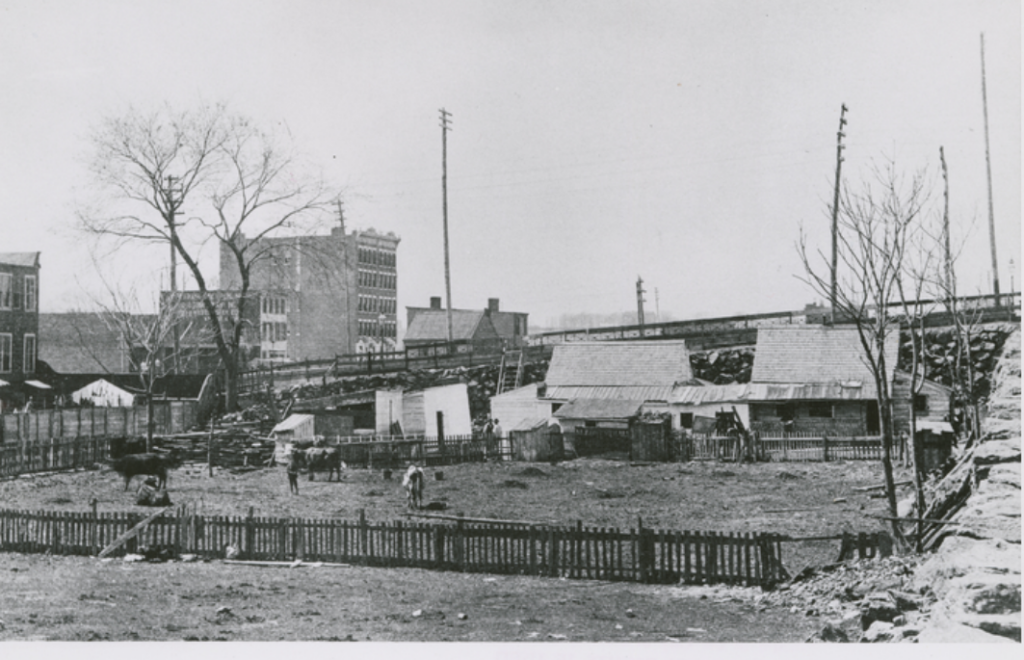
The following absurd animal story, which took place on 98th Street and Second Avenue in 1903, is dedicated to my father, Roger Gavan, who passed away on March 22, 2025. My dad was one of my biggest fans, and he had a great sense of humor. He would have chuckled as he read this story. I know he’s smiling down on me now as I write it.
Cow vs Petticoat
This is a story of an East 98th Street dairy cow gone wild. Red petticoats, anchovies, a picture of the Kaiser, sausages, garlic, police, dogs, and cats also play a role in this hilarious animal tale of Old New York.
It was a balmy winter day at King’s dairy farm on East 98th Street near Third Avenue when this tale took place. Mr. King’s favorite cow was pastured behind his shop, and she was as content as any city dairy cow could be (ie, probably not too content). There was a warm breeze blowing, which enticed the women who lived in tenements surrounding the cow pasture to hang up their winter linens in the back yards.
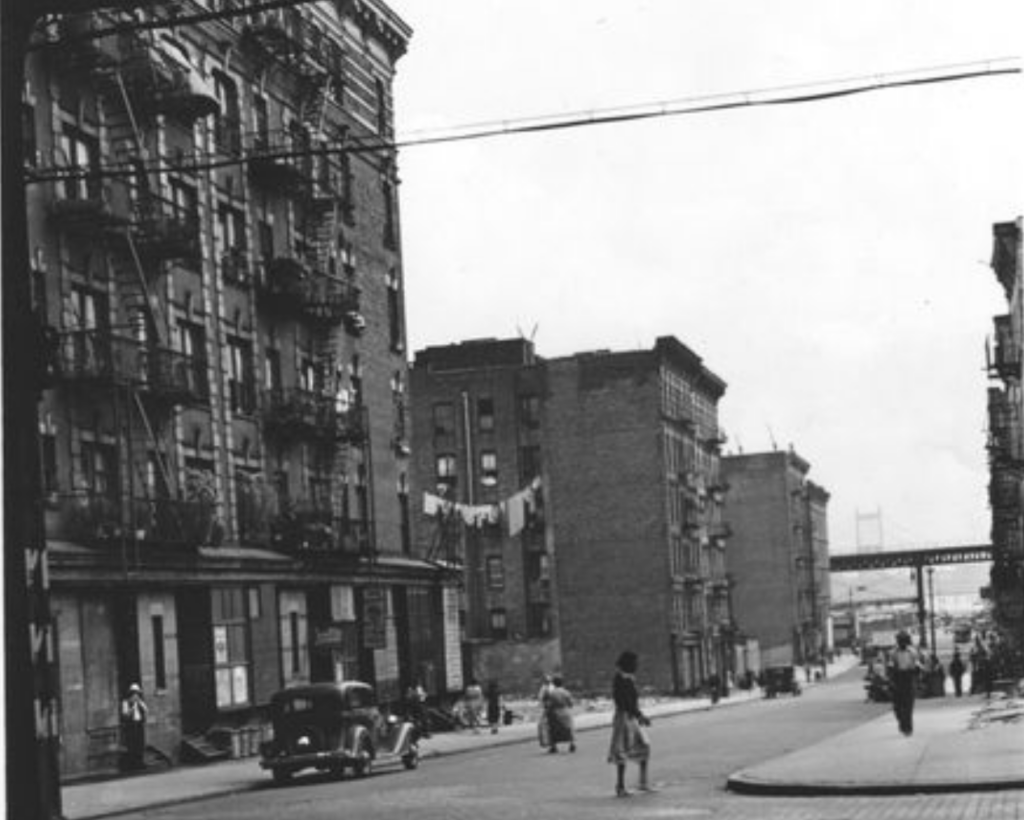
As the reporter for the The Sun noted, women who live in homes surrounding a cow lot should never hang red petticoats from the clothes line…
On this day in February 1903, Mrs. Muldoon’s red petticoat began to sway in the breeze. At the same time, Mrs. O’ Farrell appeared on her balcony with a load of wash. The very first item she placed on the line was a red petticoat. Across the way and just above a fence, Mike O’Fay’s red “unmentionables” flapped in the breeze.
As she looked to the east and the west and over the fence, the cow became agitated and nervous. Overcome with fear, she plowed through the front fence and headed toward Second Avenue.
At Second Avenue and 99th Street, some boys tried to catch her, causing the cow to dodge through an open door and into a delicatessen. There, she gazed at platters of liverwurst and nibbled on the tops of chives.
As the cow grazed peacefully on the herbs, the boys rushed into the front door. The proprietor, his wife, and his children rushed in from a back room at the same time. Surrounded on all sides, the cow began doing circles in the deli.

On her first revolution, the cow’s tail swatted a platter of anchovies, knocking them to the floor. Her tail then landed on a framed photo of the Kaiser, “giving a downward droop to the mustache which that monarch would never tolerate.”
During her second circle, the cow pierced a block of limburger cheese with her left horn and Swiss cheese with her right horn. As she charged out the door and began running down the street, she had “long, clinging tendrils of sausage links wound about her, garlands of garlic hung from her cheese-coated horns, and cold basket lunches were shaken from her flanks with every jump.” (Clearly, the reporter decided to have some fun with this story!)
What ensued was a parade of dachshunds chasing after the sausages, followed by numerous cats that had gotten a whiff of the cheese, and, according to police on the scene, “2,000 men, women, and children who followed the cats that followed the hounds that followed the cow with the cheesy horns.”
You just can’t make this up.
Eventually, Policeman Baker of the 39th Police Precinct Station House on East 104th Street lassoed in the cow by grabbing hold of the garland of garlic. The cow dragged him for a short distance, but he was finally able to calm her down and return her to her city pasture on East 98th Street.
Yes, this was in fact New York City, just a little more than 120 years ago.
A Brief History of East 98th Street
Early recorded history of what is now northern Yorkville and East Harlem goes back to 1647, when Jean de la Montagne, a French Huguenot physician and member of Governor-General Willem Kieft’s council, received a patent from Kieft for an area known by Native Americans as Rechawanis.
The bouwerie (or farm) on this property, called Vredendal and meaning peaceful valley in Dutch, stretched from 94th to 108th Streets, and from the East River to Eighth Avenue. During Montagne’s era, a grist mill was located on the south shore of Benson’s (or Harlem) Creek.
Montagne sold his property in 1672 to John L. Bogert, who in turn sold it to Johannes Benson in 1706. The original Montagne farm was split up among various members of the Benson family, including Margaret Benson McGown, who acquired a large tract from her father, Samson Benson, in 1821. The land came to be known as McGown’s Marshes or the Meadows at Hells Gate.
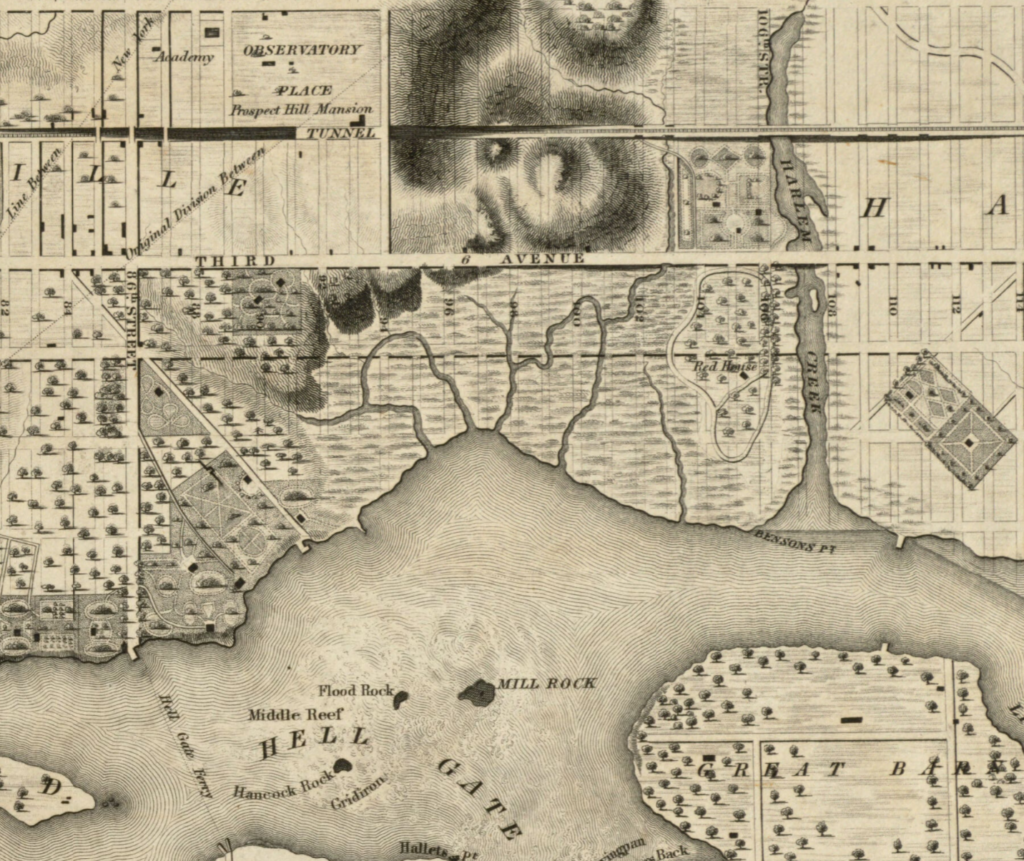
McGown’s Marshes and Prospect Hill are detailed on the 1836 map above. Also on this map is Observatory Place (top left), which was a public plaza between Fourth and Fifth Avenues and 89th and 94th Streets that opened in 1855 as a railroad tourist attraction (it closed in 1865).
The tunnel at the top left of the map was 596 feet long, and was dug through Prospect Hill, one of the highest points on the East Side of Manhattan, between 92nd and 95th Streets. The Meadows at Hell Gate are in the center. The deepest point of the bay at this point was at 98th Street.
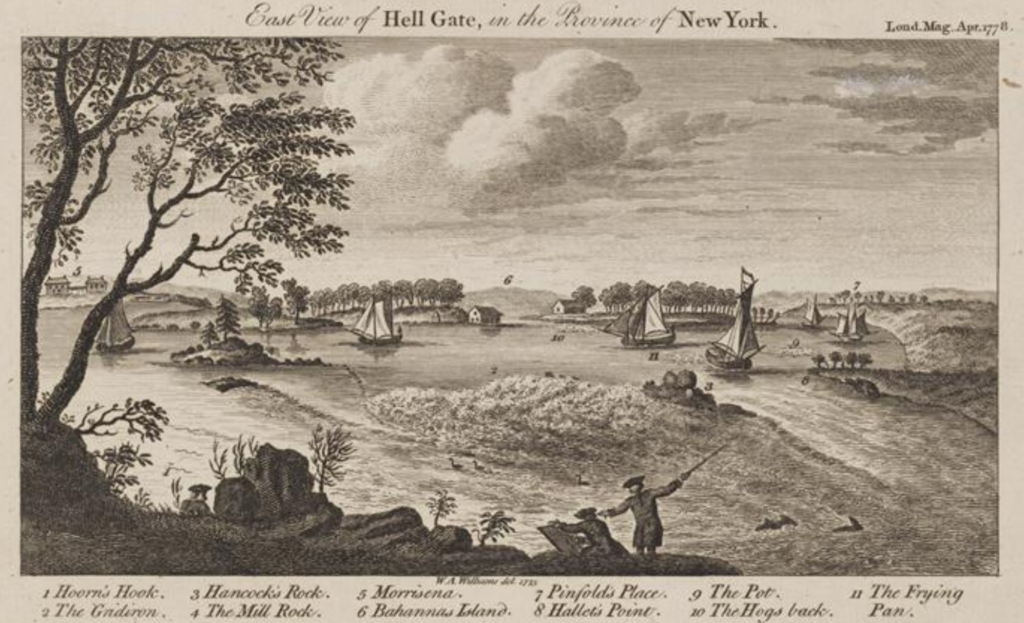
Aside from Yorkville, at German neighborhood south of East 96th Street, little development in terms of housing occurred on the upper east side of Manhattan until the mid to late 1800s, when northward expansion necessitated the filling in of McGown’s Marshes.
In 1835, Solomon M. Levengston acquired a plot of land from Margaret McGown bounded by Third and Fourth Avenues between 97th and 98th Streets. Here, he and his son established a large floral nursery and garden. The nursery featured 10 acres of land, 4 greenhouses, and 6000 square feet of glass covering.
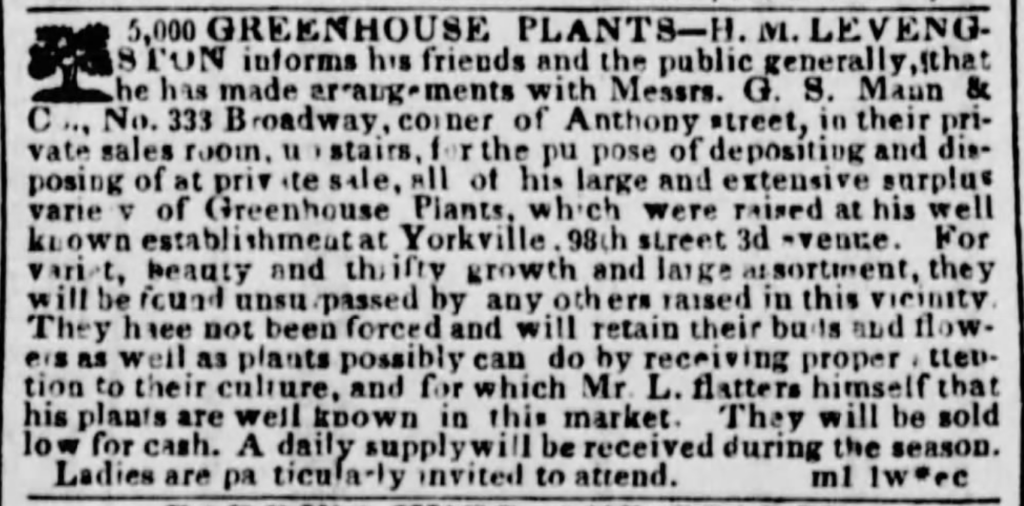
Levengston’s lots were auctioned off in 1859. At this time, the east side of Manhattan north of 42nd Street was still rural and dotted with garbage dumps, shanty towns, taverns, and rocky outcroppings. Third Avenue between 98th Street and 102nd Street was, therefore, the perfect location for cattle stockyards.
The stockyards, called the National Drove Yards, occupied 8 city blocks on the former Prospect Hill from 98th to 102nd Streets between Third and Fourth Avenues. According to one news report, there were “splendid accommodations for receiving and feed 5,000 cattle,” and on the “brow of the hill” were accommodations for 10,000 bullocks.
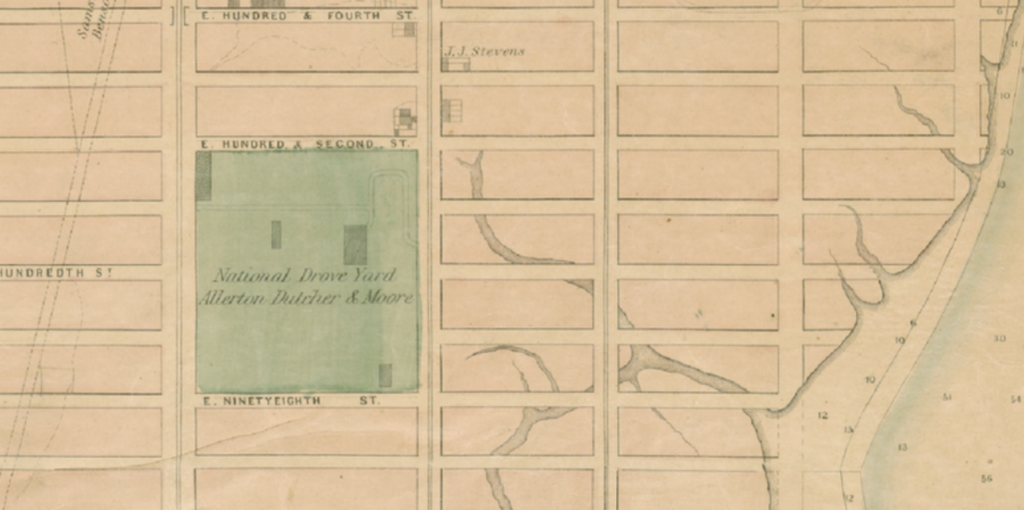
The stockyards were paved with Belgian blocks and provided with Croton (Reservoir) water. A hotel for the cattle dealers, called Allerton’s National Drove Yard Hotel, was at Third Avenue and 100th Street. The stockyards shut down in 1866.
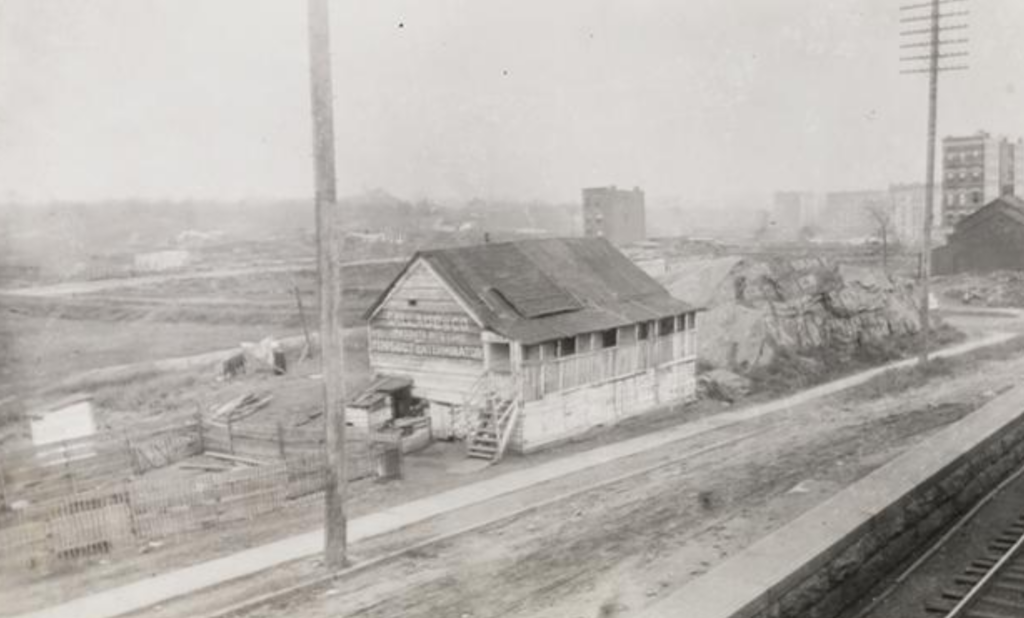
Less then 40 years after they shut down, a dairy cow escaped from a small pasture just east of the former cattle stockyards.
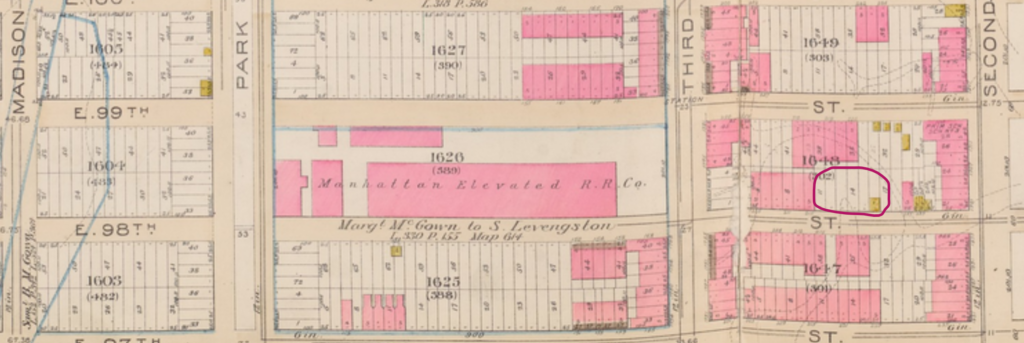

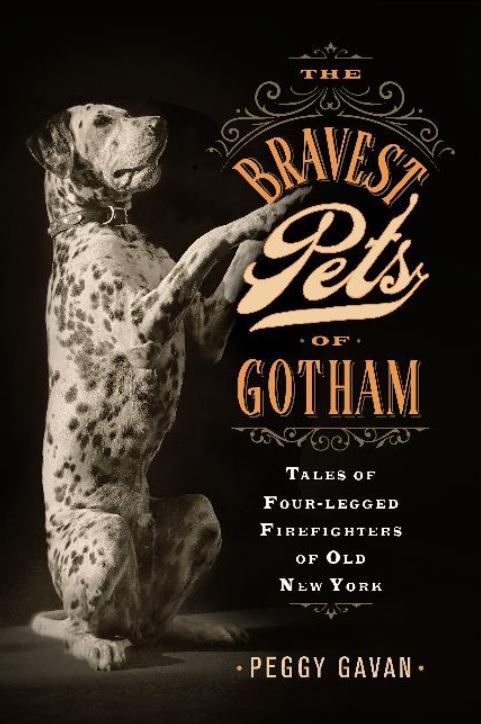
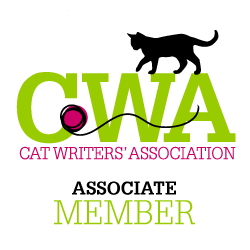

Sorry to hear about your dad.
Thank you, Harriet.
Thank you for the fun and informative article written during your time of loss. As someone who has lost parents, the memories will pop up at odd times, bringing tears and laughter as well as memories.
Thank you so much — I’m sure I’ll have a few cries and laughs in coming days.
My condolences. What a wonderful way to celebrate your father’s support of you and sense of humor.
Thank you, Alysa. My dad was the inspiration around my first story, the Hatching Cat!
Your Dad must have been so incredibly proud of you, and what a beautiful and meaningful way to honor and celebrate his life.
Thank you – he was responsible for making me an avid reader and writer!